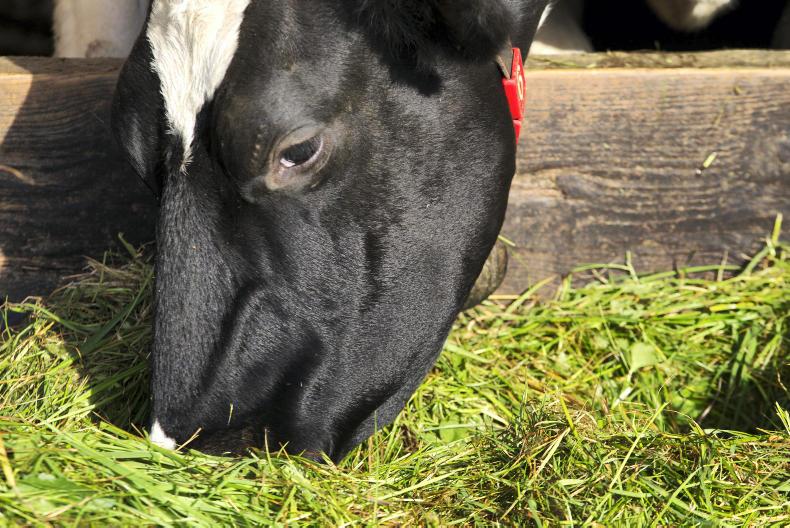The weather forecast for the coming week is pretty poor, with widespread showers, some heavy, on most days. There will be sunny spells on occasion.
The question is whether or not sufficient drying will take place between the showers to allow for grazing.
Either way, it is probably best to mentally prepare for the worst. This means that even on dry farms, cows will have to be housed for periods on most days.
More work with housing
On heavier farms or farms that get more rain, it will mean that grazing will be less likely.
This means that more work will be required in feeding, cleaning and liming cubicles and more pre-milking preparation will be required also, so factor in this extra time when planning the week’s work.
This is the downside to housing, along with the fact that cows will be fed poorer-quality silage which will depress milk yield and protein composition.
But sheds are built for these times, so it wise to make use of them to prevent doing damage to fields.
Of course, the grazing situation should be assessed after every milking.
Remembering the basics
Do the right thing for your farm, and don’t be afraid to take a chance to go out grazing.
The worst that will happen is that the cows will have to be brought back in again.
Be aware of some negative influencers.
Sometimes, older people or land owners have preconceived notions about how farms should be run and when cows should graze.
While their views and experiences should be welcomed and appreciated, at the end of the day, the farmer or manager has to make the decisions that are best for them and their farm.
As we head towards 1 March, the days are getting longer and the windy weather is helping to dry out land faster than a week or two ago.
Remember the basics of on/off grazing, grazing in square blocks and back-fencing. All of these little tips and tricks come into play when grazing in these difficult conditions.
Read more
In pictures: inside Almarai’s dairy farm in the Saudi desert
Glanbia proposals: what farmers need to know
The weather forecast for the coming week is pretty poor, with widespread showers, some heavy, on most days. There will be sunny spells on occasion.
The question is whether or not sufficient drying will take place between the showers to allow for grazing.
Either way, it is probably best to mentally prepare for the worst. This means that even on dry farms, cows will have to be housed for periods on most days.
More work with housing
On heavier farms or farms that get more rain, it will mean that grazing will be less likely.
This means that more work will be required in feeding, cleaning and liming cubicles and more pre-milking preparation will be required also, so factor in this extra time when planning the week’s work.
This is the downside to housing, along with the fact that cows will be fed poorer-quality silage which will depress milk yield and protein composition.
But sheds are built for these times, so it wise to make use of them to prevent doing damage to fields.
Of course, the grazing situation should be assessed after every milking.
Remembering the basics
Do the right thing for your farm, and don’t be afraid to take a chance to go out grazing.
The worst that will happen is that the cows will have to be brought back in again.
Be aware of some negative influencers.
Sometimes, older people or land owners have preconceived notions about how farms should be run and when cows should graze.
While their views and experiences should be welcomed and appreciated, at the end of the day, the farmer or manager has to make the decisions that are best for them and their farm.
As we head towards 1 March, the days are getting longer and the windy weather is helping to dry out land faster than a week or two ago.
Remember the basics of on/off grazing, grazing in square blocks and back-fencing. All of these little tips and tricks come into play when grazing in these difficult conditions.
Read more
In pictures: inside Almarai’s dairy farm in the Saudi desert
Glanbia proposals: what farmers need to know






 This is a subscriber-only article
This is a subscriber-only article









SHARING OPTIONS: